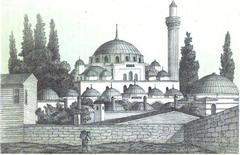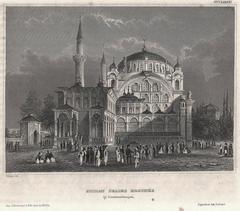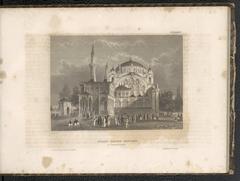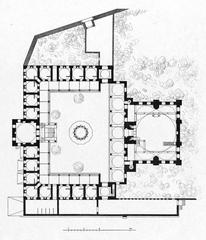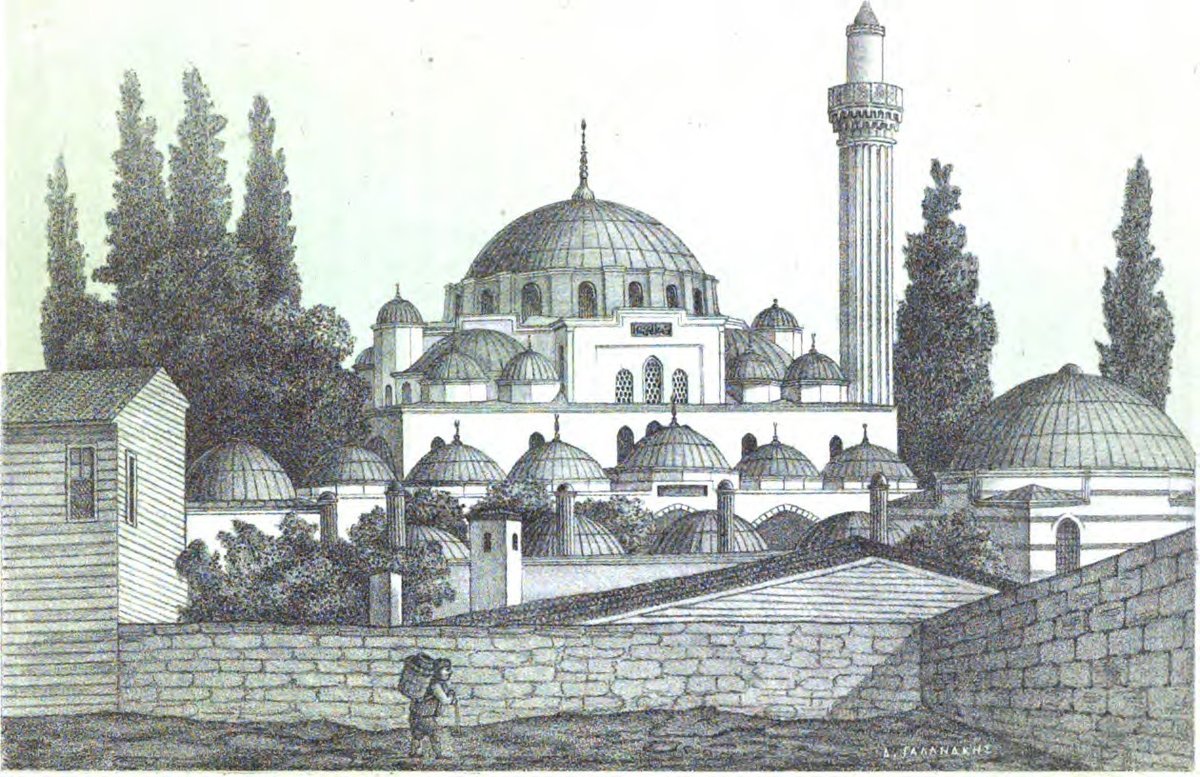
Sokollu Mehmed Pasha I Mosque Istanbul: Visiting Hours, Tickets, and Historical Significance
Date: 14/06/2025
Introduction
Nestled in the historic Kadırga neighborhood of Istanbul, the Sokollu Mehmed Pasha Mosque stands as a remarkable masterpiece of Ottoman architecture and spiritual heritage. Commissioned in the late 16th century by Grand Vizier Sokollu Mehmed Pasha, a statesman of Bosnian origin, and his wife Ismihan Sultan, daughter of Sultan Selim II, this mosque exemplifies the rich cultural and religious traditions of the Ottoman Empire. Designed by the illustrious Mimar Sinan, the structure masterfully overcomes its challenging hillside location with a two-story design, harmoniously integrating religious, educational, and commercial spaces—hallmarks of the Ottoman külliye complex.
A visit to the Sokollu Mehmed Pasha Mosque offers more than architectural beauty. The site is adorned with exquisite Iznik tiles, intricate calligraphy, and unique religious features such as fragments of the Black Stone (Hajar al-Aswad) from the Kaaba, set into its mihrab and entrances. Its tranquil atmosphere and proximity to major landmarks like Hagia Sophia and the Blue Mosque make it an essential destination for those interested in Ottoman art, history, and Islamic worship.
This guide covers everything you need to know for a meaningful visit, including historical context, architectural highlights, practical visitor information, and tips for experiencing the mosque’s serene ambiance. For additional resources, see Islamic Arts Magazine, Daily Sabah, and Wikipedia.
Table of Contents
- Introduction
- Historical Background and Patronage
- Architectural Highlights
- Religious and Spiritual Significance
- Visitor Information
- Nearby Attractions
- Visitor Etiquette and Guidelines
- Community Role and Cultural Impact
- Preservation and Legacy
- Frequently Asked Questions (FAQ)
- Conclusion
- References
Historical Background and Patronage
The Sokollu Mehmed Pasha Mosque was completed in 1571/72 CE (AH 979) under the direction of Grand Vizier Sokollu Mehmed Pasha and his wife Ismihan Sultan. Mimar Sinan, the preeminent architect of the Ottoman Empire, was entrusted with its design. The mosque’s unique two-story layout was a response to the sloped terrain of Kadırga, and it incorporated shops on the lower level to fund the mosque’s upkeep—a typical feature of Ottoman civic architecture.
The mosque complex originally included a madrasa, dervish lodge, latrines, a reservoir, and a street fountain, reflecting a comprehensive approach to community welfare and religious life. One of its most distinctive features is the inclusion of four fragments of the Black Stone from the Kaaba in Mecca, signifying its elevated spiritual status.
Architectural Highlights
Sinan’s Vision and Structural Innovation
Mimar Sinan’s architectural genius is evident in the mosque’s adaptation to a steep hillside. A terraced platform provides a level base, elevating the mosque above the surrounding streets. The central dome, approximately 13 meters in diameter, rests on four arches and semi-domes, creating a sense of spaciousness within a compact site (Daily Sabah; Guide to Europe).
Artistic and Decorative Elements
The octagonal prayer hall is surrounded by galleries and opens to a lovely courtyard (avlu) with a central ablution fountain. Inside, walls and domes are lavishly decorated with Iznik tiles in blues, turquoises, and greens, showcasing the peak of Ottoman tilework (Istanbul Tips). Intricate calligraphy and floral motifs enhance the interior, while the slender minaret punctuates the cityscape.
Religious and Spiritual Significance
The mosque’s most revered feature is its integration of four fragments of the Black Stone, embedded in the mihrab and portals. This rare relic draws worshippers and visitors alike, imbuing the mosque with extraordinary spiritual significance (Daily Sabah).
As an active place of worship, the mosque continues to serve the local Muslim community for daily prayers, religious festivals, and educational activities, remaining faithful to its original role as both a spiritual and social center.
Visitor Information
Visiting Hours
- Open Daily: 9:00 AM to 6:00 PM (may close briefly during prayer times)
- Note: Hours may vary during religious holidays or special events. Always check official sources before your visit.
Ticket Prices
- Entry: Free of charge
- Donations: Welcome to support maintenance and restoration
Accessibility
- The mosque is situated on a hillside with several steps and sloped pathways. Wheelchair access is limited; assistance is available upon request.
- The lower level shops are generally accessible, but the main prayer hall and upper areas require climbing stairs.
Guided Tours and Photography
- Tours: Available via local tour operators specializing in Istanbul’s historical sites. These provide in-depth architectural and historical insights.
- Photography: Permitted inside and outside, but avoid using flash and do not photograph worshippers during prayers.
How to Get There
- Location: Kadırga, Fatih district, Istanbul.
- Public Transport: The Sultanahmet tram stop is a 10-minute walk away. Buses and taxis also provide convenient access.
- Interactive Map: Google Maps
Nearby Attractions
The mosque’s central location means you can easily combine your visit with other iconic sites:
- Hagia Sophia
- Blue Mosque (Sultan Ahmed Mosque)
- Topkapi Palace
- Basilica Cistern
- Rüstem Pasha Mosque
Visitor Etiquette and Guidelines
- Dress Modestly: Men should wear long trousers; women should cover their arms, legs, and hair (scarves are often provided).
- Shoes: Remove before entering the prayer hall—bring a bag for your shoes.
- Silence: Keep conversations low and phones on silent.
- Photography: Respect privacy, avoid flash, and never photograph worshippers.
- Prayer Times: The mosque is closed to tourists during the five daily prayers.
Community Role and Cultural Impact
The Sokollu Mehmed Pasha Mosque exemplifies Ottoman traditions of imperial patronage, urban beautification, and community service. Its endowment supported not only worship, but also education and charity. The decorative Iznik tiles and architectural innovations influenced later Ottoman monuments, contributing enduringly to Istanbul’s unique urban fabric.
Preservation and Legacy
As a protected monument, the mosque benefits from ongoing restoration projects aimed at preserving its structural integrity, tiles, and calligraphy. These efforts ensure that this architectural gem will inspire and educate future generations (oldistanbul.com).
Frequently Asked Questions (FAQ)
Q: What are the visiting hours?
A: The mosque is open daily from 9:00 AM to 6:00 PM, with closures during prayer times.
Q: Is there an entrance fee?
A: Entry is free; donations are appreciated.
Q: Are guided tours available?
A: Yes, through local tour operators.
Q: Is photography allowed?
A: Yes, but be discreet and do not use flash or photograph worshippers.
Q: Is the mosque accessible for visitors with disabilities?
A: Accessibility is limited due to steps and slopes; assistance may be available.
Q: How do I get there?
A: A short walk from the Sultanahmet tram stop; accessible by public transport and taxi.
Quick Facts Table
| Aspect | Details |
|---|---|
| Patron(s) | Sokollu Mehmed Pasha and Ismihan Sultan |
| Architect | Mimar Sinan |
| Date of Completion | 1571/72 CE (AH 979) |
| Location | Kadırga, Fatih, Istanbul |
| Original Complex Components | Mosque, madrasa, dervish lodge, latrines, reservoir, street fountain, shops |
| Notable Features | Iznik tiles, Black Stone fragments, two-story design, educational and commercial spaces |
| Historical Context | Late 16th-century Ottoman Empire, reigns of Suleiman I, Selim II, Murad III |
| Endowment Purpose | Worship, education, charity, community support |
Visual Experience
Summary and Final Tips
The Sokollu Mehmed Pasha Mosque remains a hidden gem, encapsulating the artistic brilliance and spiritual depth of the Ottoman era. Its ingenious two-story design, vibrant Iznik tiles, and the inclusion of sacred relics elevate it beyond a simple place of worship. Visitors enjoy free daily access, a tranquil atmosphere, and proximity to other major Istanbul landmarks.
Tips for Your Visit:
- Visit outside prayer times for a peaceful experience.
- Dress modestly and bring a scarf for head covering.
- Combine your visit with other nearby historical sites.
- Use resources like the Audiala app for guided tours and maps.
- Respect local customs and contribute to preservation efforts if possible.
References and Further Reading
- Islamic Arts Magazine: Sokollu Mehmed Pasha and His Mosque Complex in Istanbul
- Daily Sabah: Sokollu Mehmed Pasha Mosque, Istanbul’s Hidden Treasure
- oldistanbul.com: Sokollu Mehmed Pasha Mosque Visiting Guide
- Wikipedia: Sokollu Mehmed Pasha Mosque, Kadırga
- Turkish Archaeological News: Sokollu Mehmed Pasha Mosque (Fatih)
Experience the living heritage of the Ottoman Empire at the Sokollu Mehmed Pasha Mosque—a testament to Istanbul’s enduring legacy of art, faith, and community.
